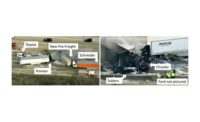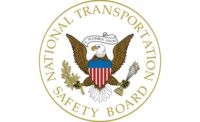Anatomy of a plane crash
NTSB: Pilot was fatigued, didn’t know procedures

 The National Transportation Safety Board (NTSB) has determined that the pilot in a fatal 2013 plane crash in Thomson, Georgia lacked adequate system knowledge for the airplane he was flying.
The National Transportation Safety Board (NTSB) has determined that the pilot in a fatal 2013 plane crash in Thomson, Georgia lacked adequate system knowledge for the airplane he was flying.
Consequently -- according to the NTSB’s report into the accident -- the pilot did not adhere to the airplane’s flight manual procedures for antiskid failure in flight and did not retract the lift dump -- a critical system to assist in stopping the aircraft -- immediately after making the decision to perform a go-around.
Five people killed
All five passengers were killed and the pilot and copilot seriously injured in the Feb. 20th incident involving a Beechcraft Corporation 390 Premier that touched down at Thomson-McDuffie County Airport after returning from a business flight. The aircraft did not slow as the pilot expected and, about seven seconds later, the pilot initiated a go-around. About nine more seconds passed before the aircraft collided with a utility pole about 1,835 feet from the departure end of the runway, 63 feet above the ground.
Fatigue also a factor
The NTSB noted that the pilot’s fatigue, due to acute sleep loss, and his ineffective use of time between flights to obtain sleep, contributed to the accident.
“This pilot’s inadequate knowledge of his aircraft was compounded by his fatigue,” said NTSB Acting Chairman Christopher A. Hart. “As a result, five people died who did not have to. Just as pilots should not take off without enough fuel, they should not operate an aircraft without enough rest.”
Pilot didn't use checklist
On approach to the airport, after the landing gear was lowered, the antiskid fail light illuminated. The copilot commented on the illumination; however, the pilot continued the approach without responding or taking any action. Furthermore, the pilot did not refer to the available Federal Aviation Administration-approved Abbreviated Pilot Checklist, which addresses antiskid failure and provides specific landing distance values.
According to the checklist for an antiskid system failure, the flap configurations available for the pilot were flaps up or flaps 10. Either of these configurations would have required a longer landing distance than the runway at Thomson-McDuffie Country Airport provided. As a result, the pilot should have sought landing at an alternate airport.
The NTSB’s investigation revealed that data from the enhanced ground proximity warning system recorded that the aircraft was configured at flaps 30, which is prohibited by the antiskid failure procedures. At the time of impact, the flaps were transitioning through flaps 15. Additionally, while both the airplane’s flight manual and a placard in the cockpit warned against extending the lift dump in flight, the go-around was attempted with the lift dump deployed, making a safe climb unlikely.
The full report is available here: http://www.ntsb.gov/aviationquery/brief.aspx?ev_id=20130220X11432&key=1
Looking for a reprint of this article?
From high-res PDFs to custom plaques, order your copy today!







